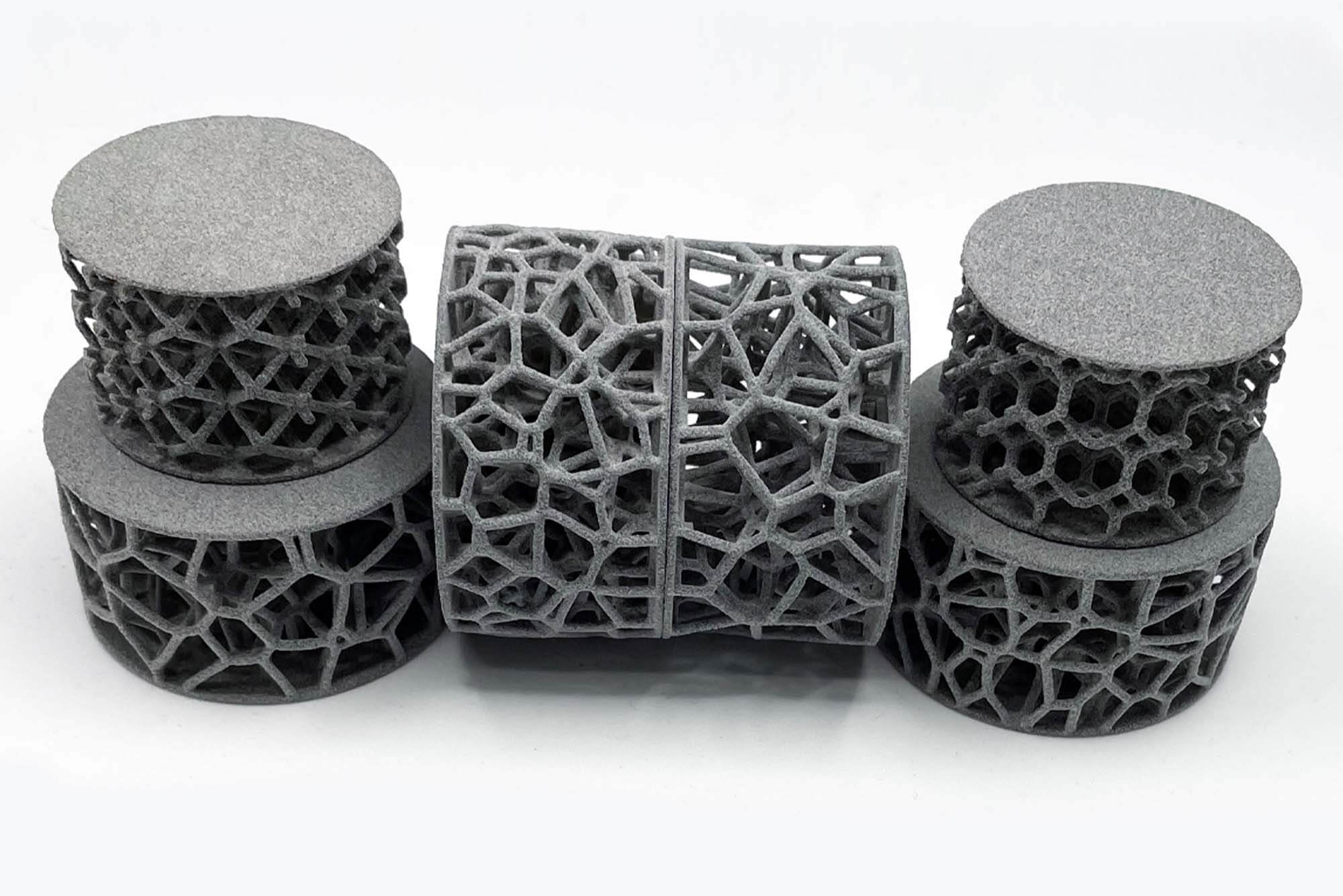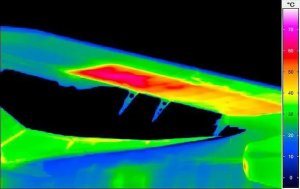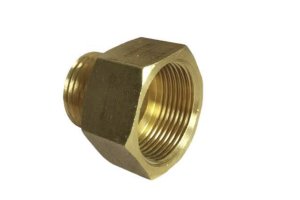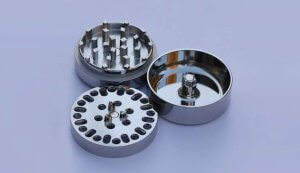Introduction
The use of lattice structures is revolutionizing the way industries approach design, performance, and efficiency. From lightweight aerospace components to high-performance medical implants, lattice structures offer engineers the opportunity to create highly optimized parts that would otherwise be impossible with traditional materials. These structures, with their intricate, interconnected patterns, allow for significant reductions in material usage without compromising the strength or functionality of the component.
As the demand for customized lattice structures increases, so does the need for advanced manufacturing techniques that can transition these designs from the conceptual phase to mass production. In my experience, the most successful projects combine 3D printing for prototyping with CNC machining to bring precision and scalability. Custom machining plays a crucial role in refining lattice structures by ensuring tight tolerances, improving surface finish, and enhancing mechanical properties. Additionally, CNC machined parts offer superior accuracy and repeatability, making them ideal for high-performance applications that require consistency and durability.
In this article, I will guide you through the process of lattice structure customization, covering the essential stages from prototyping to mass production, and the key considerations involved in using custom machining techniques. Whether you’re a design engineer, a manufacturer, or a researcher, you will gain insights into how to handle complex geometries, optimize material properties, and effectively scale up production.
Understanding Lattice Structures in Custom Machining
1.1 What Is a Lattice Structure?
At its core, a lattice structure is a network of repeating units, where each unit is typically a node connected by struts. These structures are created to optimize strength-to-weight ratios, making them ideal for applications where weight reduction without sacrificing structural integrity is critical. Lattice structures are often inspired by natural forms such as bone structures or honeycombs due to their inherent strength and efficiency.
Lattice structures are available in a variety of patterns and configurations, each offering unique mechanical properties suited to different engineering needs. Common examples include:
- Honeycomb Lattices: These are often used for lightweight panels and core materials due to their ability to absorb energy and provide high compressive strength.
- Diamond and Gyroid Lattices: These offer high mechanical strength and are typically used in applications where the part is subjected to dynamic loads.
The ability to design and manufacture these intricate patterns allows for a level of optimization that traditional materials cannot match, especially in high-performance engineering fields.
1.2 The Importance of Lattice Structures
The increasing demand for lattice structures in various industries is driven by their ability to provide several critical benefits:
- Lightweight and High Strength: The aerospace industry has embraced lattice structures in aircraft wings and structural supports to reduce weight without sacrificing performance. Similarly, automotive manufacturersare integrating these structures into chassis and frames to improve fuel efficiency.
- Energy Absorption: The medical field benefits greatly from lattice structures, particularly in the design of bone scaffolds and implants. These structures are designed to absorb shock, making them ideal for protective gearor impact-resistant materials.
- Thermal Management: In the automotive and electronics sectors, lattice structures have been incorporated into heat exchangers and cooling systems. Their open structures allow for effective heat dissipation and help to prevent overheating in critical components.
Moreover, lattice structures are gaining prominence in the field of biocompatibility. By mimicking natural structures like bone, they facilitate better integration with biological tissues, leading to better healing outcomes in medical implants such as hip replacements and dental implants.
1.3 Challenges in Manufacturing Lattice Structures
While lattice structures offer outstanding benefits, manufacturing them—especially at scale—can present several challenges:
- Design Complexity: The intricate nature of lattice structures means that traditional manufacturing methods, such as casting or machining, are often not suitable. These methods cannot replicate the fine details required for internal geometries or complex shapes.
- Material Selection and Cost: Manufacturing lattice structures often requires high-performance materials such as titanium, aluminum alloys, or stainless steel. These materials come with a higher cost, especially when scaled to larger volumes.
- Precision: Lattice structures require precision machining to ensure that each strut and node meets the desired performance standards. The tolerances for these structures must be carefully controlled to prevent weaknesses that could affect their structural integrity.
Despite these challenges, the transition from prototyping to mass production can be made seamless through a combination of 3D printing and CNC machining.
3D Printing vs. Custom Machining for Lattice Structures
2.1 When 3D Printing Is Enough
3D printing is particularly effective in the prototyping phase of lattice structure development, where the goal is to quickly validate designs before moving into mass production. Here’s why 3D printing is often the go-to method for lattice structure prototyping:
- Design Freedom: One of the biggest advantages of 3D printing is that it allows for the creation of complex internal geometries that would be impossible to manufacture using traditional methods. This makes it ideal for lattice structures, which often involve intricate interconnecting nodes and struts.
- Material Efficiency: Since 3D printing is an additive process, material is added layer by layer, which reduces waste and maximizes the use of expensive materials like titanium or stainless steel.
- Speed: 3D printing can create a prototype in hours, which speeds up the iterative design process. Engineers can rapidly test different lattice configurations, making adjustments as needed before finalizing the design.
Some of the best 3D printing technologies for lattice structures include:
| Technology | Best Used For | Common Materials |
|---|---|---|
| SLS (Selective Laser Sintering) | Lightweight polymer lattice | Nylon, PA12 |
| DMLS (Direct Metal Laser Sintering) | Metal lattice structures | Titanium, Stainless Steel |
| EBM (Electron Beam Melting) | Aerospace-grade titanium parts | Titanium, Inconel |
| FDM (Fused Deposition Modeling) | Large, low-cost prototypes | PLA, ABS, TPU |
2.2 When Custom Machining Is Necessary
Despite the advantages of 3D printing, custom machining becomes necessary when precision, material optimization, or large-scale production is required. CNC machining plays a critical role in creating highly accurate parts and ensuring they meet the necessary performance standards:
- Precision: CNC machines are capable of creating exact dimensions, ensuring that each lattice structure conforms to the required tolerances for mating parts, holes, threads, and interfaces.
- Material Properties: CNC machining is ideal for metals and composites, where the structural properties must be optimized through precise material removal. Materials like aluminum, titanium, and stainless steel can be machined into lattice patterns for strength and durability.
- Scalability: CNC machining is designed for mass production, where high-volume runs of lattice structures are required. The ability to replicate parts with exact specifications at scale is one of CNC machining’s primary strengths.
Some of the CNC machining techniques used for lattice structures include:
| Machining Method | Best Used For | Advantages |
|---|---|---|
| 5-Axis CNC Milling | Complex lattice parts | High precision, flexible toolpaths |
| EDM (Electrical Discharge Machining) | Intricate details in hard metals | Fine details, no tool wear |
| Laser Cutting | Sheet metal lattice panels | Fast production, clean edges |
| CNC Turning | Lattice structures with symmetry | Precision and efficiency |
Material Considerations for Lattice Structure Manufacturing
3.1 Material Selection for Lattice Structures
The choice of material for lattice structures directly affects the performance, cost, and manufacturability of the final product. Since lattice structures are commonly used in applications where lightweight yet high-strength materials are crucial (such as aerospace, medical implants, and automotive parts), selecting the right material is critical for achieving the desired performance characteristics.
Choosing the best material for a lattice structure depends on several factors:
- Strength-to-weight ratio: Lattice structures are specifically designed to reduce weight while maintaining strength. Aluminum and titanium alloys are popular for their high strength-to-weight ratios.
- Thermal properties: In industries like aerospace and automotive, thermal conductivity and heat resistanceplay a vital role, making materials like titanium or stainless steel ideal choices for heat exchangers or high-temperature components.
- Fatigue resistance: For critical applications such as medical implants and automotive safety systems, fatigue resistance is a key consideration. Materials like titanium are preferred due to their excellent fatigue strengthand biocompatibility.
- Machinability: Certain materials, like titanium and carbon fiber composites, can present significant challenges during CNC machining. Understanding the machinability of a material ensures that lattice structures can be produced efficiently and with high precision.
Here is a breakdown of common materials used for lattice structures, their suitability for prototyping vs. mass production, and their specific applications:
| Material | Best for Prototyping? | Best for Mass Production? | Common Applications |
|---|---|---|---|
| Aluminum (6061, 7075) | ✅ Yes (3D printing & CNC) | ✅ Yes (CNC milling) | Aerospace, automotive, general lightweight structures |
| Titanium (Ti-6Al-4V) | ✅ Yes (3D printing) | 🚫 Expensive for mass production | Medical implants, aerospace |
| Stainless Steel (316L, 17-4PH) | ✅ Yes (3D printing) | ✅ Yes (CNC milling) | Structural engineering, military, medical |
| Carbon Fiber Composites | ❌ Difficult for 3D printing | ✅ Yes (CNC trimming) | Automotive, aerospace, high-performance parts |
Aluminum Alloys
Aluminum alloys like 6061 and 7075 are widely used in lattice structure manufacturing due to their combination of lightweight properties, good machinability, and affordable cost. These alloys are commonly used in aerospace and automotive applications where weight reduction is paramount. Additionally, aluminum’s excellent thermal conductivity makes it ideal for use in heat exchangers and cooling systems.
Titanium Alloys
Titanium, specifically Ti-6Al-4V, is favored in aerospace and medical industries for its superior strength, corrosion resistance, and biocompatibility. While titanium’s machinability can be challenging due to its hardness, it is widely used in 3D printing and CNC machining for high-performance applications. In medical implants, the porosity of titanium lattice structures enhances bone growth and integration. Titanium’s exceptional fatigue resistance makes it an ideal material for high-stress, long-term use components.
Stainless Steel
Stainless steel, particularly 316L and 17-4PH, is commonly used for lattice structures requiring high strength, corrosion resistance, and durability. This material is often selected for structural applications in military, construction, and aerospace sectors, where strength and resilience are paramount. CNC machining is frequently used to achieve precise tolerances, while 3D printing is used for initial prototyping of lattice designs.
Carbon Fiber Composites
Carbon fiber is often used for applications that require extreme strength-to-weight ratios, such as in automotive and aerospace industries. However, machining carbon fiber presents challenges, particularly during the CNC trimmingphase, as it requires specialized tools to prevent damage and ensure accuracy. Carbon fiber lattices are typically produced using CNC machining for high-performance parts that require lightness without sacrificing structural integrity.
3.2 Machining Lattice Structures
The complexity of lattice structures often creates unique challenges in machining. While 3D printing allows for complex internal geometries, machining offers greater precision, surface finish, and material optimization.
CNC Machining for Lattice Structures
For custom machining, CNC techniques are used to create highly precise lattice parts from materials like aluminum, titanium, and stainless steel. Some of the challenges include:
- Tool access: Lattice structures often feature thin struts and nodes that may be difficult to reach with conventional tooling. This requires the use of 5-axis CNC milling machines that can access hard-to-reach areas without damaging the delicate structures.
- Tool wear: The hardness of materials like titanium and carbon fiber composites can cause significant wear on CNC tools. Specialized tools with coated edges or diamond abrasives are often required.
- Surface finish: Lattice parts often require post-machining polishing or coating to meet aesthetic and functionalsurface finish requirements, especially for medical implants and aerospace components.
To address these issues, manufacturers have developed specific strategies, such as toolpath optimization and modular fixtures, to improve machining efficiency and reduce costs.
3.3 Emerging Materials for Lattice Structures
In addition to traditional materials like aluminum, titanium, and stainless steel, there are emerging materials gaining popularity for lattice structures. These materials aim to offer improved performance, sustainability, and cost-efficiency.
Graphene and Carbon Nanotubes
Graphene and carbon nanotubes are being explored for next-generation lattice structures due to their exceptional strength and lightweight properties. These materials can potentially be used in aerospace, automotive, and military applications where extreme performance is required. Although these materials are still in early stages of development, they hold great promise for the future of nano-engineered lattice structures.
Biodegradable Polymers
In medical applications, the development of biodegradable polymer lattice structures offers the potential for temporary implants that dissolve over time, allowing bone growth without the need for removal. Polymers like PLA (polylactic acid) and PHA (polyhydroxyalkanoates) are gaining traction for creating biocompatible lattice structures that eventually break down naturally in the body.
High-Temperature Materials
In the aerospace and defense industries, high-temperature alloys such as Inconel and tungsten are increasingly used in lattice structures that must withstand extreme conditions. These materials are used in turbine engines, heat exchangers, and engine components where traditional materials may fail under high stress and temperature.
3.4 Material Optimization for Lattice Design
The design of lattice structures is heavily influenced by the material chosen. Proper optimization of the lattice geometry can reduce material waste and enhance performance. This is where AI-driven design and advanced simulation software come into play.
AI-Driven Design: Using algorithms, lattice designs can be optimized to use the least amount of material while still providing the required structural integrity. This is particularly useful when working with expensive materials like titanium or carbon fiber composites, where minimizing waste can lead to significant cost savings.
Simulation and Testing: Before committing to production, simulations can be run on different lattice designs and materials to ensure that the final product will perform as expected under real-world conditions. This includes simulations for stress testing, fatigue analysis, and thermal resistance, all of which are essential to ensuring the longevity and reliability of the part.
Conclusion
Choosing the right material for lattice structures is not just about picking the most suitable option; it’s about finding the balance between performance, cost, and manufacturability. Whether you’re prototyping with 3D printing or moving into large-scale production with CNC machining, the material selection process is one of the most critical stages in lattice structure manufacturing.
Emerging materials like graphene, biodegradable polymers, and high-temperature alloys are pushing the boundaries of what is possible, while the combination of advanced manufacturing techniques ensures that lattice structures can be customized and produced with the highest precision.
Scaling Up: From Prototyping to Mass Production
4.1 Steps to Transition from Prototyping to Mass Manufacturing
The journey from a prototype to mass production is a critical phase in the life cycle of any product, especially for lattice structures. Transitioning involves a careful evaluation of design, materials, and manufacturing techniques to ensure scalability, cost-effectiveness, and performance.
Step 1: Design Validation (Prototyping Stage)
In the prototyping stage, the goal is to test out your lattice design. At this point, 3D printing is usually the best option because it allows for rapid iteration and testing. 3D-printed prototypes enable designers to:
- Quickly assess the fit and functionality of the lattice design.
- Test how the part holds up under real-world conditions, like stress and impact testing.
- Make design adjustments easily based on test results.
Step 2: Process Selection
Once the design has been validated, it’s time to consider how to manufacture it at scale. This is where custom machining comes in. Deciding between 3D printing, CNC machining, or a hybrid approach (combining both) is essential. Factors to consider include:
- Volume: For small batches, 3D printing may still be the best option, while for large-scale production, CNC machining is often more efficient and cost-effective.
- Complexity: While CNC machining can achieve high precision and smooth surfaces, 3D printing is ideal for creating the complex internal geometries that lattice structures often require.
- Material Requirements: Certain materials (like titanium or stainless steel) may require CNC machining for better material optimization, while others can be effectively printed.
Step 3: Cost Optimization for Mass Production
The final step is to optimize the manufacturing process for cost-efficiency. This can be achieved by:
- Batch processing: Running multiple parts at once reduces labor and overhead costs.
- Toolpath optimization: In CNC machining, optimizing toolpaths ensures minimal tool wear and more efficient cutting.
- Material reduction strategies: AI-driven optimization can help design lattice structures that minimize material use while maintaining strength.
Optimizing these steps ensures that you can scale your lattice structure from a simple prototype to a reliable, high-quality product that is cost-effective and ready for mass production.
4.2 Reducing Costs in Mass Production
Reducing costs during mass production is a critical challenge in lattice structure manufacturing. The following strategies can help optimize the process and bring down production costs:
Batch Production
Batch production is a cost-effective strategy when manufacturing lattice structures at scale. Rather than producing parts individually, batch production groups multiple parts together for simultaneous machining or 3D printing. This reduces labor and material handling costs, while also increasing output.
Material Optimization
When using materials like titanium or carbon fiber, material costs can be significant. By using advanced software tools like nTopology or Autodesk Netfabb, engineers can design lattice structures that reduce material usage without sacrificing strength. This optimization ensures that parts are lighter and cheaper to produce.
AI and Automation
Incorporating AI-driven design into the lattice structure optimization process allows for automated decision-making that identifies the most material-efficient and manufacturable designs. Moreover, automating aspects of machining and 3D printing can significantly reduce production costs and increase throughput.
Case Studies: Real-World Applications of Lattice Structure Customization
5.1 Aerospace Industry: Lightweight Lattice Wings
In the aerospace industry, Boeing and Airbus have embraced lattice structures as a means to reduce weight without compromising the strength or durability of their aircraft. One of the most notable applications is the use of lattice wing supports. These parts are often made from titanium or aluminum alloys, which are 3D-printed for prototypes before being CNC-machined for final production. The use of lattice structures in aircraft wings not only reduces weight but also improves fuel efficiency, as lighter components result in less energy consumption during flight.
By integrating lattice structures, Airbus A380 and Boeing 787 have made significant strides in fuel efficiency and reducing environmental impact.
5.2 Medical Industry: Titanium Lattice Bone Implants
In the medical field, lattice structures have found incredible use in bone implants and medical devices. Titanium bone scaffolds are created with 3D printing to match the porosity of bone, promoting better osseointegration (the process by which the implant fuses with the bone). Once printed, these structures undergo CNC machining to refine their surfaces, ensuring that they fit perfectly and are free from defects.
One well-known example is the Oxford Hip Implant by Zimmer Biomet, which uses 3D-printed titanium lattice structures. These implants are designed for better healing and long-term integration with the body, thanks to the ability to design customized, porous lattice geometries.
5.3 Automotive Industry: Heat Dissipating Lattice Structures
The automotive industry has also embraced lattice structures in applications like engine cooling systems and heat exchangers. Formula 1 teams and high-performance automotive manufacturers use lattice structures for their radiators, intercoolers, and engine heat exchangers to enhance cooling efficiency while minimizing weight.
For example, McLaren Racing uses CNC-machined aluminum lattice structures to cool the high-performance engines in their Formula 1 cars. These parts are optimized for heat transfer and lightweight design, contributing to better engine performance and reduced fuel consumption.
The Future of Lattice Structure Customization
6.1 AI-Driven Design and Optimization
Looking ahead, the integration of artificial intelligence (AI) into the design and manufacturing processes of lattice structures will continue to transform the way we approach these parts. AI algorithms can optimize lattice configurations for specific performance requirements, ensuring that designs are both material-efficient and highly functional. Additionally, AI will enable autonomous design adjustments based on real-time feedback from the manufacturing process, reducing human intervention and speeding up product development.
6.2 Hybrid Manufacturing: 3D Printing + CNC Machining
The future of lattice structure manufacturing will likely see an increase in hybrid manufacturing techniques. Combining 3D printing for creating intricate lattice geometries and CNC machining for precision finishing is an ideal approach to achieve both complex designs and mass production scalability. Hybrid systems will allow manufacturers to create parts that are both highly functional and cost-effective, while also reducing material waste.
In industries such as aerospace, automotive, and medical devices, this hybrid approach will continue to play a key role in developing next-generation products.
Conclusion
Lattice structure customization has become a fundamental tool in modern manufacturing. Whether in aerospace, medical implants, automotive components, or industrial applications, the use of lattice designs continues to grow, offering benefits in weight reduction, energy absorption, and thermal management. However, as these designs move from prototype to mass production, careful attention must be paid to the manufacturing methods and material selection that ensure precision, cost-efficiency, and scalability.
By combining the strengths of 3D printing and custom machining, manufacturers can successfully transition from the rapid prototyping of lattice structures to high-volume, high-quality production. The future holds exciting possibilities with the integration of AI-driven design, hybrid manufacturing, and advanced materials that promise to make lattice structures even more impactful in shaping the future of engineering.
FAQ
1. What is a lattice structure in manufacturing?
A lattice structure is a three-dimensional framework made up of interconnected nodes and struts arranged in a repeating pattern. These structures are designed to be both lightweight and strong, making them ideal for industries like aerospace, automotive, and medical implants. The lattice pattern allows for optimized material usage while maintaining mechanical integrity.
2. Why are lattice structures used in engineering design?
Lattice structures are used because they offer high strength-to-weight ratios, making them ideal for applications that require both lightness and strength, such as aircraft parts, automobile components, and medical devices. Additionally, they allow for optimized material usage, which helps reduce material costs while still maintaining the necessary structural properties.
3. What are the advantages of machining lattice structures instead of 3D printing them?
While 3D printing is great for prototyping and complex geometries, machining lattice structures allows for higher precision and better material properties. CNC machining is particularly useful when precise mating surfaces, threads, or bearing fits are needed. It also allows for the use of harder materials like metals (titanium, stainless steel), which may not be easily printable.
4. What machining techniques are used to process lattice structures?
The most common machining techniques for lattice structures include:
- CNC Milling: This is the most commonly used method for machining lattice structures, especially for complex 3D geometries and high-precision parts.
- Electrical Discharge Machining (EDM): This method is used to create intricate features in hard materials like titanium or stainless steel.
- Laser Cutting: Ideal for producing sheet metal lattice panels with clean, precise cuts.
- CNC Turning: Used for creating rotationally symmetrical lattice parts.
5. How do 3D printing and CNC machining work together in lattice structure manufacturing?
3D printing is typically used for the initial prototyping of lattice structures, allowing designers to quickly test complex geometries. Once the design is validated, CNC machining is used for precision finishing, post-processing, and large-scale production. This hybrid approach combines the benefits of both methods, where 3D printing handles complex shapes, and CNC machining ensures high precision and surface finish.
6. Can lattice structures be made entirely with CNC machining?
It is possible to create lattice structures using CNC machining, but it is generally more time-consuming and expensive compared to 3D printing, especially for complex internal geometries. CNC machining is often used after the 3D printed prototype to achieve high precision and functional features, such as threaded holes or mating surfaces.
7. What materials are commonly used for lattice structures?
Some of the most common materials used for lattice structures include:
- Aluminum (6061, 7075) for lightweight applications in aerospace and automotive.
- Titanium (Ti-6Al-4V) for medical implants and high-performance aerospace components.
- Stainless steel (316L, 17-4PH) for structural engineering and defense applications.
- Carbon fiber composites for lightweight and strong automotive and aerospace parts.
8. How do material properties impact lattice structure design?
Material properties such as strength, thermal conductivity, fatigue resistance, and machinability play a huge role in lattice structure design. For example:
- Materials like titanium provide high strength and fatigue resistance, making them ideal for medical implantsand aerospace components.
- Aluminum alloys are often used in automotive and aerospace applications for their lightweight properties and good machinability.
- Stainless steel offers excellent corrosion resistance and is typically used in high-stress environments.
9. What are the benefits of lattice structures in medical implants?
Lattice structures in medical implants, such as bone scaffolds, offer several advantages:
- Bone integration: The porous nature of lattice structures promotes osseointegration, allowing the body’s natural bone tissue to grow into the implant.
- Customized design: Lattice structures can be tailored to the patient’s needs, ensuring that the implant fits perfectly.
- Reduced weight: Lattice implants are much lighter than traditional solid implants, reducing the overall weight of the device and improving patient comfort.
10. What are the challenges of machining lattice structures?
Machining lattice structures presents several challenges:
- Tool access: Lattice structures often have thin struts and small openings, making it difficult for conventional tools to reach certain areas.
- Vibration: The intricate design can lead to vibration during machining, especially when using high-speed spindles.
- Material removal rates: For complex lattice geometries, the material removal process can be slow, making it more costly compared to other manufacturing methods.
11. How is hybrid manufacturing used for lattice structures?
Hybrid manufacturing combines both additive manufacturing (3D printing) and subtractive methods (CNC machining) to create high-quality lattice structures. In this process, 3D printing is used to create the initial complex geometry, and CNC machining is used to refine the part and add functional features like mating surfaces, holes, and smooth finishes.
12. How do I ensure my lattice structure is manufacturable?
To ensure that your lattice structure is manufacturable:
- Use CAD software with lattice generation capabilities (such as nTopology or Fusion 360).
- Consider manufacturability by checking for features that might cause problems in machining or 3D printing.
- Simplify the design where possible to minimize tool access problems.
- Select the appropriate material that aligns with your performance requirements and machining capabilities.
13. What industries are adopting lattice structures the most?
The industries that are adopting lattice structures the most include:
- Aerospace: For weight reduction without compromising strength, particularly in wing structures and engine components.
- Medical: For customized implants and prosthetics that require biocompatibility and the ability to integrate with natural bone.
- Automotive: For lightweight components like brackets, bumpers, and heat exchangers.
- Consumer products: For items such as footwear, protective gear, and sports equipment that require high performance in terms of comfort and energy absorption.
14. How can lattice structures be optimized for mass production?
Lattice structures can be optimized for mass production through:
- Design optimization: Use topology optimization and AI-driven software to create the most material-efficient lattice designs.
- Batch production: Group parts together for simultaneous processing, reducing per-unit costs.
- Toolpath and fixture optimization: Implement automated toolpaths and use modular fixtures to improve machining efficiency and reduce setup time.
15. What is the future of lattice structure manufacturing?
The future of lattice structure manufacturing is focused on:
- Advanced materials: Emerging materials like graphene, carbon nanotubes, and biodegradable polymers will expand the potential applications of lattice structures.
- AI and automation: The integration of AI in design and manufacturing will optimize lattice structures for both performance and cost.
- Hybrid manufacturing: The combination of 3D printing and CNC machining will continue to be a critical tool for creating complex, high-precision lattice structures at scale.
Other Articles You Might Enjoy
- Machining Techniques for Parts: Unlocking CNC and Cutting-Edge Tech
I. Introduction I remember the first time I realized how critical machining is to modern manufacturing. I was interning at a small shop, watching a CNC machine carve intricate features…
- SFM Meaning and Its Importance in CNC Machining for Different Materials
Introduction: What Is SFM and Why Does It Matter in CNC? When I first heard the phrase “sfm meaning” in the context of CNC machining, I remember feeling a bit…
- Custom CNC Machining: Tailoring Solutions to Unique Engineering Challenges?
Introduction to Custom CNC Machining In the manufacturing world, innovations continually emerge and challenge traditional production methodologies. A significant game-changer has been Computer Numerical Control (CNC) machining — a process…
- Enhancing Efficiency in CNC Machining Parts Production with Cutting-Edge Machining Centers
Machining centers are game-changers in the world of CNC machining. Imagine a workshop where a single machine can perform multiple operations—turning, milling, drilling, and more—without moving the workpiece from one…
- Material Versatility in CNC Machining: From Titanium to Thermoplastics
Introduction to CNC Machining CNC machining stands as a cornerstone in the manufacturing sector, enabling the precise creation of parts and components. This process utilizes computer numerical control (CNC) to…
- Precision CNC Machining for High-Performance Industrial Machinery
Precision CNC Machining for High-Performance Industrial Machinery The process of Precision CNC (Computer Numerical Control) machining is at the core of manufacturing high-performance industrial machinery. This technique leverages a computer's…









